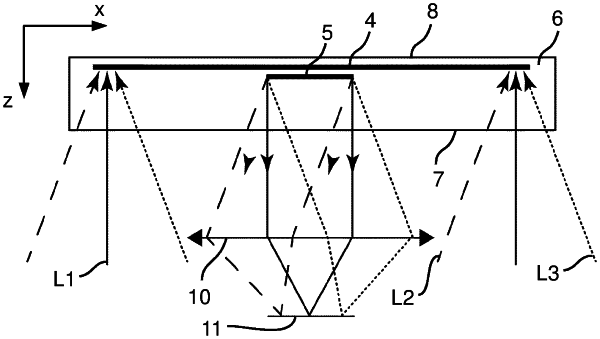| CPC G02B 6/0035 (2013.01) [G02B 6/42 (2013.01); G02B 6/4214 (2013.01); H04N 23/55 (2023.01)] | 14 Claims |

|
1. A functionalized waveguide for a detector system, comprising:
a transparent base body having a front side and a rear side, wherein the base body comprises a partly transparent input coupling region and a output coupling region spaced apart therefrom in a first direction,
wherein the input coupling region deflects only a portion of radiation coming from an object to be detected and impinging on the front side, such that the deflected portion propagates as coupled-in radiation in the base body as far as the output coupling region via reflections and impinges on the output coupling region,
wherein the output coupling region deflects at least one portion of the coupled-in radiation impinging on it, such that the deflected portion emerges from the base body via the front side or rear side in order to impinge on the detector system,
wherein an extent of the input coupling region in a second direction transverse to the first direction is greater than an extent of the output coupling region in the second direction, and
wherein the input coupling region comprises along the second direction at least two different diffractive input coupling structures, each of which differ in that they comprise a different deflection component in the second direction.
|